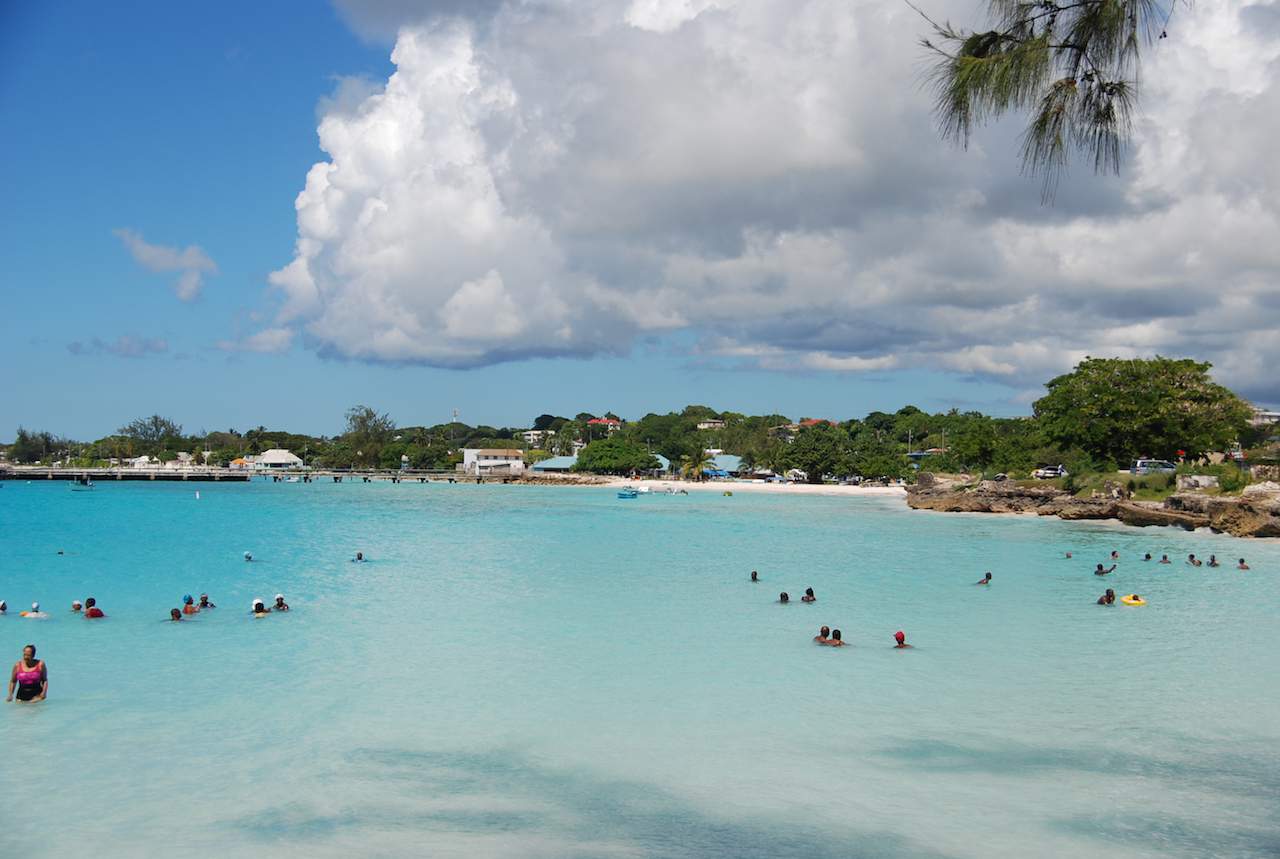Name: Barbados
Location: The most easterly in the Caribbean chain of islands in the North Atlantic Ocean, northeast of Venezuela. It sits almost a hundred miles east of its closest neighbour.
Population: 285,000 (UN, 2016). The ethnic mix is primarily African descent (90%) followed by Asian and mixed races (6%) and Caucasian (4%).
Capital: Bridgetown in the parish of St Michael on the southwest coast.
Other key cities: Speightstown in St Peter, Oistins in Christ Church and Holetown/Sunset Crest in St James.
Language: The official language is English but the Bajan dialect is widely spoken.
Airport: Grantley Adams International Airport
Area: 430 sq km (166 sq miles): 21 miles long (34km) and 14 miles (23 km) wide. It is divided into eleven parishes ranging from St Lucy in the North to Christ Church in the south.
Major religion: Christianity – Mostly Anglican but there are also 100 other religions practised.
Life expectancy: 71 years (men), 78 years (women) (UN)
Monetary unit: 1 Barbadian dollar = 100 cents is tied to the US $. US dollars are accepted island wide. Expect an exhange of $2.00 Barbadian dollars for each US dollar. Other currencies fluctuate so check with thelocal banks.
Credit Cards: Most stores and restaurants accept major credit cards and traveller’s cheques.
Banks: Banks are generally open Monday to Thursday from 8am-3pm and Friday 8an-5pm.
Shop Hours: Supermarkets are open daily from 8am and close close between 7pm and 10pm in the evenings. Other retail outlets are generally open Monday to Saturday at 9am and close at 5pm (2pm on Saturday). Shops are only open on Sunday in December.
Tax: 15% VAT is usually included in prices. Hotels will add 7.5% VAT and 10% service charge to your final bill.
Tipping: Usually 10-15%
Internet domain: .bb
International dialling code: +1246
Electricity: 115/230V 60Hz
Water: Water in Barbados is pure and safe to drink from the tap.
Temperature: Average daytime temperature ranges between 80-87°F (27-30°C).
Read also :
- Winter Sun Holidays in Barbados
- What is there to see and do in Barbados
- Barbados in November – Winter Sun Island Paradise
When to go to Barbados
Barbados has two seasons: the rainy season and the dry season. The rainy season lasts from May to November. The weather is hot but there are short spots of heavy rain. The busiest time is from December to April. Rates are a little higher at this time and some hotels may require you to buy some kind of meal plan, which is usually not required in the low season.
In mid-January, the Barbados Jazz Festival is a weeklong event jammed with performances by international artists, jazz legends, and local talent.
In February, the weeklong Holetown Festival is held at the fairgrounds to commemorate the date in 1627 when the first European settlers arrived in Barbados.
Gospelfest occurs in May and hosts performances by gospel headliners from around the world.
Dating from the 19th century, the Crop Over Festival, a monthlong festival similar to Carnival beginning in July and ending on Kadooment Day (a national holiday), marks the end of the sugarcane harvest.
Getting Around Barbados
Public Transport
Public transport comprises buses and minibuses readily available. The fare is $1.50 and it is best to have the exact money ready.
Government-owned Transport Board buses are the largest on the road – blue with yellow stripes and license plates with ‘BM’ prefixes.
Privately-owned minibuses are yellow with blue stripes and license plates have ‘B’ prefixes.
Privately-owned Route Taxis are white with burgundy stripes and license plates bearing the ‘ZR’ prefix.
Bus stops fall into two categories are are marked : (1) ‘To City’ meaning that the end of the route will be in Bridgetown and (2) ‘Out of City’ meaning that the bus is driving away from Bridgetwon and will complete its route before returning to the City.
When at the bus stop put out your hand to stop the bus.
Bus terminals are found in Bridgetwon, Oistins and Speightstown.
More information from www.transportboard.com especially about bus schedules to and from tourists attractions.
Taxis
Regular taxis have license plates with ‘Z’ prefix. Many have set fares for most routes, but do enquire beforehand.
Mini vans have license plates bearing the ‘ZM’ prefix. As they charge their own fares be sure to ask in advance what the fare will be.
Driving around
The UK style drive on the LEFT rule applies.
Traffic at many major intersections is regulated by roundabouts. Traffic in roudabouts flow in a clockwise direction and where there are two lanes, stay in the inner lane until you are ready to exit – then move with caution to the other (leftmost) lane to exit.
You need a valid national or international driver’s licence to be able to obtain a temporary Barbados driver’s licence from Police stations, licensing authorities and authorised car rental companies. Fees are US$5 for a 2-month permit and US$50 for a 1 year permit.
Need to Know
If you buy duty free cigarettes, you will be taxed on arrival in Barbados. Each 200 carton will attract $10.10 duty free tax, $37.60 Excise tax plus and Environmental tax of 3% and a further 15% VAT.
Warning
Narcotics are widely smoked on the island but be aware that all drugs, including cannabis, are illegal. Penalties for possession can be up to 20 years. So though you may be offered cannabis on the streets and on the beaches, you accept at your peril.
Tourist Information
Highlights
- Tyrol Cot Heritage Village
- Bridgetown
- Holetown – the oldest town in Barbados
- St Lawrence
- Barbados Wildlife Reserve
- Harrison’s Cave
- Welchman Hall Gully
- See also: What is there to see and do in Barbados

